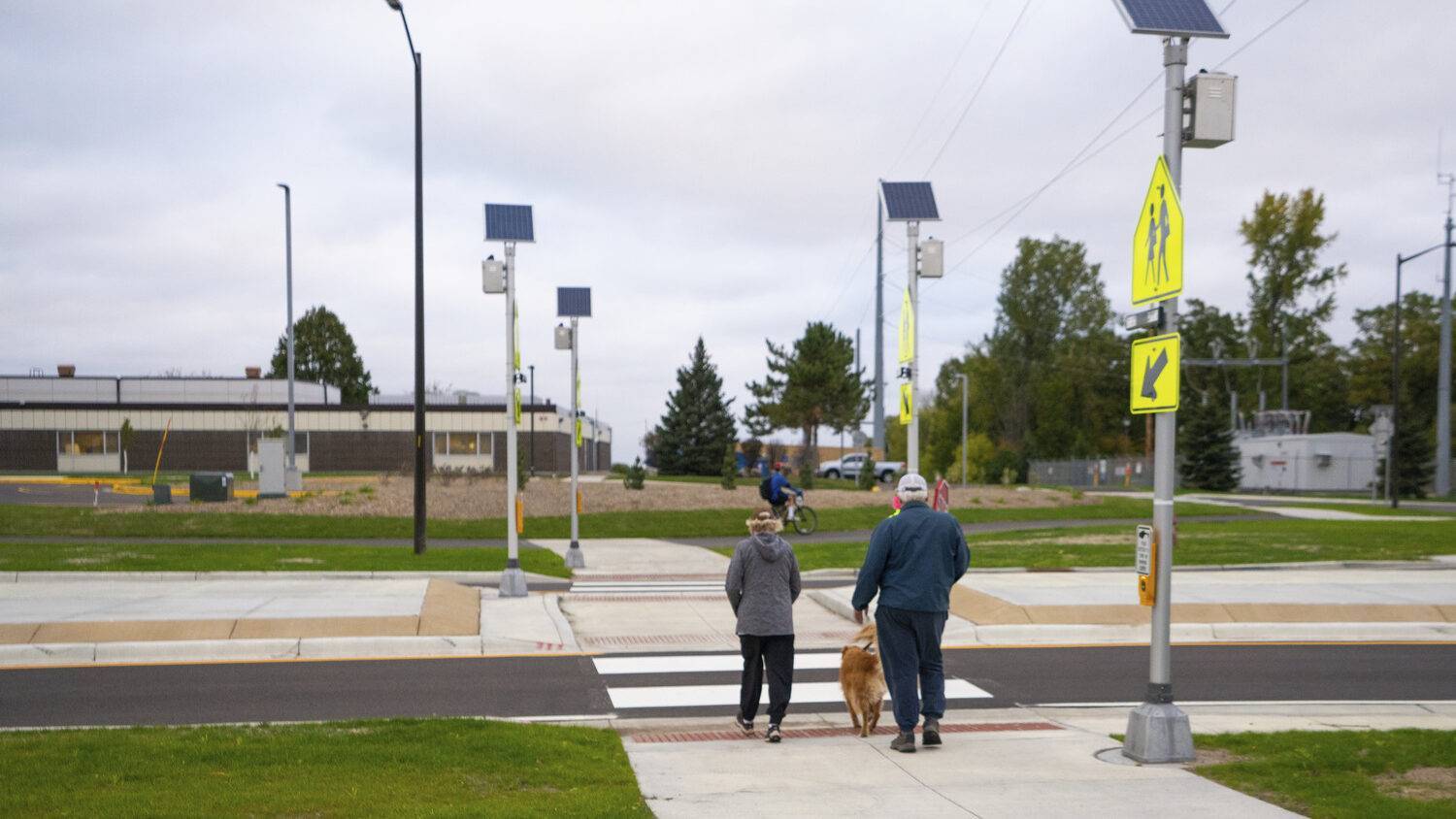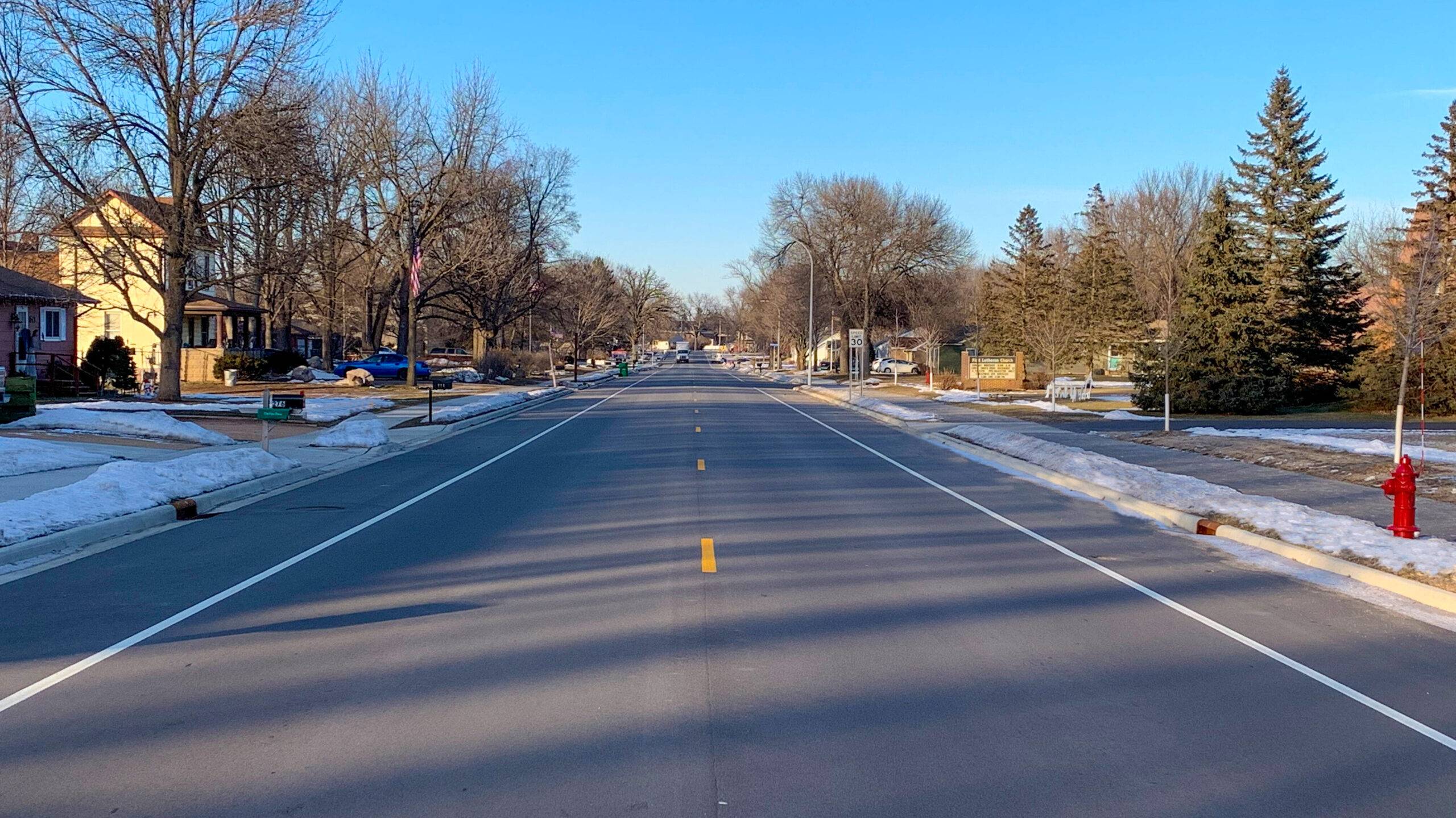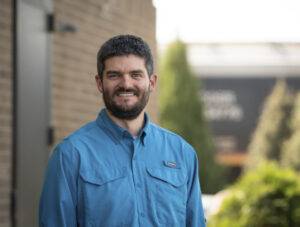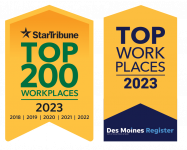
Rural Community Planning: Making Sure the Sidewalk Doesn’t End
For over a century, sidewalks have become a staple in modern American cities. We use them for safe transportation and for physical activities like walking, running, and biking. However, sidewalk projects are not always welcome. Putting new sidewalks in can be controversial in rural Minnesota due to nonexistent or unsuitable policies. And residents often object because of the impact sidewalks may have on their personal property. Despite this resistance, it’s important to communicate the many benefits of sidewalks in rural communities, as well as identify feasible policies and plans for successful implementation. When rural communities are in need or want of sidewalks and trails, how can we make sure the sidewalk doesn’t end?
Creating Connection
When cities add sidewalks in their communities, they create connection. Improving connection networks strengthens recreational opportunities, economic opportunities, and overall quality of life. And for those who don’t have a car, it’s important to create alternative transportation accommodations.
Sidewalks also create active, healthy, and safe communities. Walking is one of the most common forms of physical activity, and sidewalks and trails are the building blocks to promote healthy lifestyles. Sidewalks are also necessary to create vehicle separation from pedestrians. Safe routes create transportation avenues for people of all ages, including kids that may walk or bike to school.

Planning for Sustainability
Adding sidewalks and trails in a community starts with a city’s policy. Even if residents are reluctant, cities that have policies in place can be more successful when it’s time to implement these changes. Effective policies include adding sidewalks when other work is already being done. For example, the city would build sidewalks in new development areas or in existing neighborhoods where roads are being reconstructed. A successful plan in Minnesota will also include winter maintenance policies and clearly outline the responsibilities of property owners and the city.
A policy ensures that a city’s needs will be met for many years, even if city leadership changes. Policies that have community buy-in are likely to be kept in place, creating sustainable plans.
To develop a policy, take a comprehensive look at infrastructure needs in your community and begin to document a plan that shows the need for sidewalk and trail facilities. Look at high-priority needs in your community, like connectivity gaps or roadway crossing safety issues.
If there are residential areas, schools, or churches that lack crossings, document those areas to show why sidewalk resources are needed. Once a plan is starting to form, engage with community members to find out what components of these facilities are important to them.
Conversations with Communities
It’s important for city leaders to engage with residents to get their feedback on sidewalks and trails. In the City of Le Sueur (population 4,213), a roadway rehabilitation project was successfully expanded to include a new paved trail, based on city feedback for a county roadway project.
“Community conversations about the prioritization and implementation of new trails and sidewalks started in 2018, with initial hesitancy and reservations about the enhancement of our pedestrian amenities,” says Le Sueur City Administrator Jasper Kruggel. “Fast forward to 2021 and our new sidewalks and trails are beloved by the community and highly used.”

Communication is critical to create sustainable communities, and it’s key to remember that communication is a two-way conversation. Listen to residential feedback and, in turn, share the goals of accessibility, safety, and opportunities that can be created with new sidewalks or trails.
A city can also successfully implement sidewalks and trails when they have good partnerships with other agencies. Not every road that runs through a city is owned by the city. Good partnerships with the agencies that manage those roadways can help ensure the community’s needs or wants are met during restoration projects.
Where the sidewalk doesn’t end
Even with a policy in place, it’s essential to review and update those policies every few years as community needs and wants change. When rehabilitation projects are being presented, reference the plans that are in place, and prioritize projects based on impacts in your community. With policies, plans, and engagement in place, any community can be successful when it comes to ensuring the sidewalk doesn’t end.
As published in Minnesota League of Cities, Minnesota Magazine, written by Cody Christianson, PE, ENV SP, a Multimodal Project Engineer with Bolton & Menk. Bolton & Menk is a member of the League’s Business Leadership Council.
 Cody has national pedestrian and bicycle expertise that helps build support for improved multimodal infrastructure. By listening to community input, coordinating with project stakeholders, and using his industry experience, Cody designs improvements that create an inviting environment, enhance pedestrian and bicycle safety, and address community goals. He uses his experience to help design accessible infrastructure that is easy to navigate and improves the region’s transportation system for those who walk, bike, or roll.
Cody has national pedestrian and bicycle expertise that helps build support for improved multimodal infrastructure. By listening to community input, coordinating with project stakeholders, and using his industry experience, Cody designs improvements that create an inviting environment, enhance pedestrian and bicycle safety, and address community goals. He uses his experience to help design accessible infrastructure that is easy to navigate and improves the region’s transportation system for those who walk, bike, or roll.
Learn more about Bolton & Menk’s corridor and multimodal projects here.
